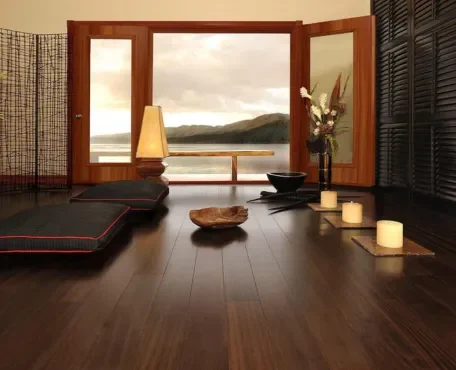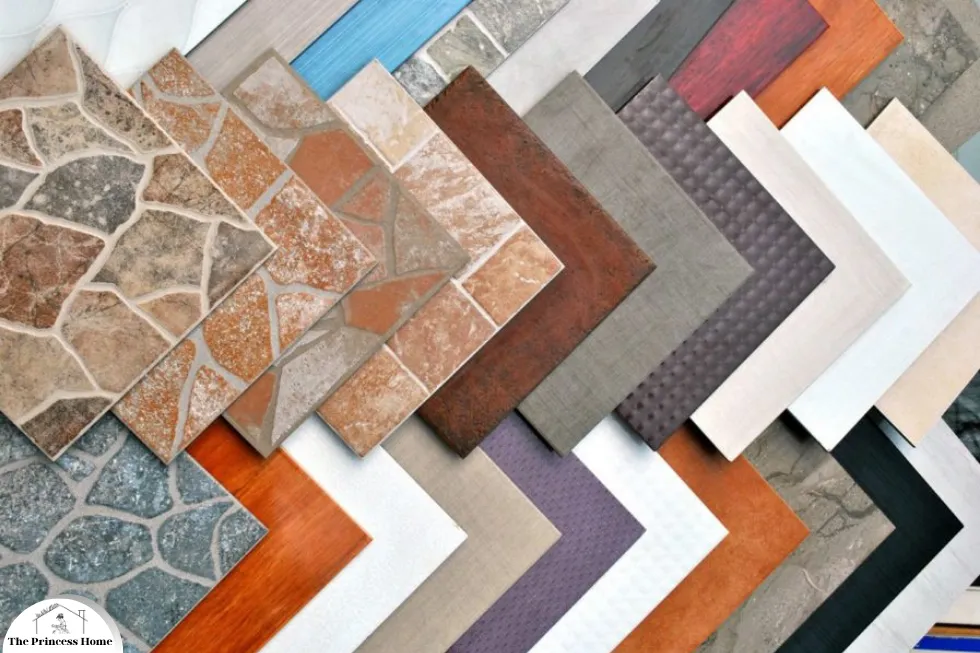
Choosing the right flooring for your home is a crucial decision, as it not only impacts the aesthetics but also affects the comfort, functionality, and value of your space. With a plethora of flooring options available in the market, each boasting its unique features, it can be overwhelming to make the right choice. This comprehensive guide aims to simplify your decision-making process by providing an in-depth overview of various flooring types, along with their pros and cons.

1*.Hardwood Flooring:
Hardwood flooring is a type of flooring made from real wood. It’s highly valued for its durability, timeless appeal, and the warmth it brings to a space.
Here are some key points about hardwood flooring:
1.Types of Hardwood:
Hardwood floors can be made from various types of wood, including oak, maple, cherry, walnut, and hickory, among others. Each type of wood has its own unique characteristics in terms of color, grain pattern, and hardness.
2.Solid vs. Engineered:
There are two main types of hardwood flooring: solid and engineered. Solid hardwood is made from a single piece of wood and is typically thicker, allowing for sanding and refinishing multiple times. Engineered hardwood consists of multiple layers of wood with a top layer of hardwood veneer. It’s more stable than solid hardwood and is a better option for areas prone to moisture.
3.Installation:
Hardwood flooring can be installed using various methods, including nail-down, glue-down, or floating installations. The installation method depends on factors such as the type of hardwood, subfloor, and the specific environment.
4.Maintenance:
Proper maintenance is essential to keep hardwood floors looking their best. This includes regular sweeping or vacuuming to remove dirt and debris, as well as occasional mopping with a hardwood floor cleaner. It’s also important to promptly clean up spills to prevent damage to the wood.
5.Durability:
Hardwood floors are known for their durability and longevity. With proper care and maintenance, hardwood floors can last for decades and even centuries. They can also be refinished multiple times to restore their original beauty.
6.Cost:
Hardwood flooring can be more expensive upfront compared to other types of flooring, such as laminate or vinyl. However, many homeowners see it as a worthwhile investment due to its longevity and the value it adds to a home.
7.Environmental Considerations:
Some hardwood flooring is harvested from sustainable sources, while others may contribute to deforestation. It’s important to choose hardwood flooring that is certified by organizations such as the Forest Stewardship Council (FSC) to ensure that it comes from responsibly managed forests.
Overall, hardwood flooring is a popular choice for homeowners looking to add beauty, warmth, and value to their homes.

Hardwood flooring exudes timeless elegance and adds warmth to any room. Made from solid wood or engineered wood, it offers durability and can last for decades with proper maintenance. However, hardwood flooring can be susceptible to scratches and moisture damage, requiring periodic refinishing and careful maintenance. It’s best suited for living rooms, bedrooms, and dining areas.
Pros:
- Timeless aesthetic appeal
- Durable and long-lasting
- Adds value to the property
- Can be refinished multiple times
- Enhances indoor air quality
Cons:
- Susceptible to scratches and dents
- Vulnerable to moisture damage
- Relatively expensive upfront cost
- Requires regular maintenance
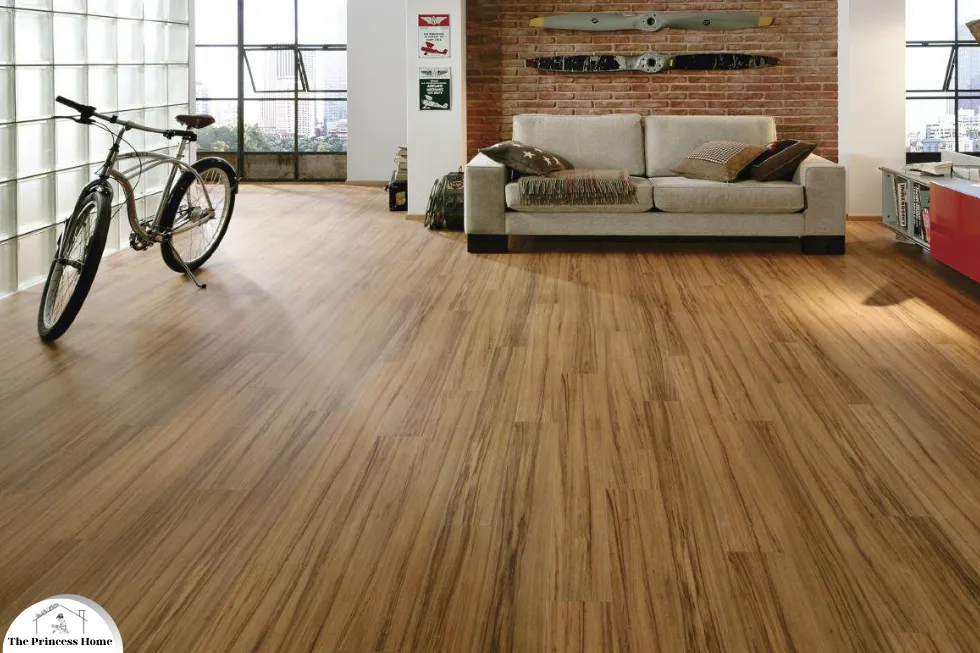
2*.Laminate Flooring:
Laminate flooring offers a budget-friendly alternative to hardwood, mimicking the look of wood or other materials at a fraction of the cost. It consists of multiple layers, including a durable wear layer, a decorative layer, and a moisture-resistant core. Laminate flooring is easy to install, resistant to scratches and stains, and requires minimal maintenance. However, it lacks the authenticity and natural beauty of hardwood and may not add as much value to the property.
Here are some key points about laminate floor:
1.Durability:
Laminate flooring is highly durable and resistant to scratches, dents, and stains, making it suitable for high-traffic areas such as living rooms, hallways, and kitchens.
2.Affordability:
Compared to hardwood flooring, laminate is often more budget-friendly. It can provide the look of hardwood, tile, or stone at a fraction of the cost.
3.Easy Installation:
Laminate flooring is known for its easy installation, especially compared to other types of flooring like hardwood or tile. Many laminate products feature a click-and-lock mechanism that allows for straightforward installation without the need for glue or nails. This makes it a popular choice for DIY projects.
4.Variety:
Laminate flooring comes in a wide range of styles, colors, and patterns, allowing homeowners to find the perfect look to complement their decor. Whether you prefer the appearance of oak, maple, ceramic tile, or slate, there’s likely a laminate option to suit your taste.
5.Maintenance:
Laminate flooring is relatively low maintenance. Regular sweeping or vacuuming, along with occasional damp mopping, is typically all that’s needed to keep it looking great. Additionally, because of its protective top layer, laminate is resistant to fading from sunlight.
6.Moisture Resistance:
While laminate flooring is generally resistant to moisture, it’s important to note that it is not waterproof. Prolonged exposure to standing water can cause damage, so it’s essential to clean up spills promptly and avoid installing laminate in areas prone to frequent moisture, such as bathrooms or laundry rooms.
7.Environmental Considerations:
Some laminate flooring products are made using recycled materials, making them a more environmentally friendly choice. Additionally, laminate flooring does not require the harvesting of rare or endangered wood species, making it a sustainable option for environmentally conscious consumers.
Overall, laminate floor offers a cost-effective and versatile solution for homeowners looking to enhance the appearance and functionality of their living spaces.

Pros:
- Affordable option
- Wide range of designs and styles
- Resistant to scratches and stains
- Easy to clean and maintain
- Suitable for high-traffic areas
Cons:
- Less durable than hardwood
- Not as visually appealing as natural wood
- Cannot be refinished
- Prone to water damage if not properly sealed
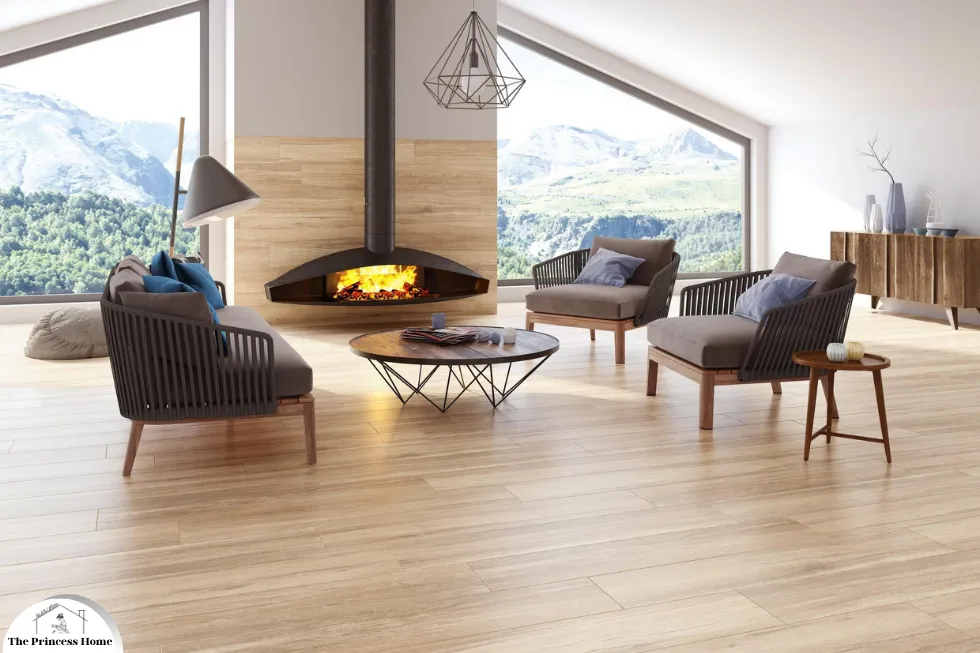
3*.Vinyl Flooring:
Vinyl flooring has evolved significantly in recent years, offering an array of styles, including vinyl plank and vinyl tile. It is highly durable, waterproof, and resistant to scratches and stains, making it ideal for kitchens, bathrooms, and basements. Vinyl flooring is also comfortable underfoot and provides excellent sound insulation. However, it may emit volatile organic compounds (VOCs) and is not as eco-friendly as other options.
Vinyl floor is a versatile and increasingly popular floor option known for its durability, affordability, and wide range of styles. It’s made from synthetic materials, primarily PVC (polyvinyl chloride) and plasticizers, which give it flexibility and resilience.
Here are some key points about vinyl flooring:
1.Durability:
Vinyl flooring is highly durable and resistant to scratches, stains, and water damage, making it suitable for high-traffic areas and spaces prone to moisture, such as kitchens, bathrooms, and basements. It can withstand heavy foot traffic and is less likely to show wear and tear compared to some other flooring materials.
2.Affordability:
Vinyl flooring is generally more budget-friendly than hardwood, laminate, or tile flooring options. Its affordability makes it an attractive choice for homeowners looking to update their floors without breaking the bank.
3.Variety of Styles:
Vinyl flooring comes in a wide range of styles, colors, patterns, and textures, including options that mimic the look of hardwood, stone, ceramic tile, and more. This versatility allows homeowners to achieve the aesthetic they desire while enjoying the benefits of vinyl’s durability and easy maintenance.
4.Easy Installation:
Many vinyl flooring products are designed for easy installation, including peel-and-stick tiles, click-and-lock planks, and loose lay options. This makes vinyl flooring a popular choice for DIY projects, as it can often be installed without professional assistance.
5.Low Maintenance:
Vinyl flooring is relatively low maintenance compared to some other flooring materials. It can be cleaned with regular sweeping, vacuuming, or mopping using mild detergent and water. Unlike hardwood or laminate flooring, vinyl does not require refinishing or sealing to maintain its appearance.
6.Comfort and Resilience:
Vinyl flooring offers a comfortable underfoot feel, thanks to its flexibility and cushioning properties. It can help reduce noise transmission and provide a softer surface to walk on compared to harder flooring materials like tile or hardwood.
7.Water Resistance:
One of the significant advantages of vinyl flooring is its water resistance. Most vinyl flooring options are waterproof or highly water-resistant, making them ideal for areas prone to spills or moisture, such as kitchens, bathrooms, and laundry rooms.
8.Environmental Considerations:
While vinyl flooring is not biodegradable and is made from synthetic materials, some manufacturers offer eco-friendly options made with recycled content or materials that can be recycled at the end of their lifespan. Additionally, vinyl flooring’s long lifespan and low maintenance requirements can contribute to its overall sustainability compared to other flooring options that require more frequent replacement or maintenance.
Overall, vinyl floor is a versatile, durable, and cost-effective option for homeowners seeking attractive and practical floor solutions for their homes.
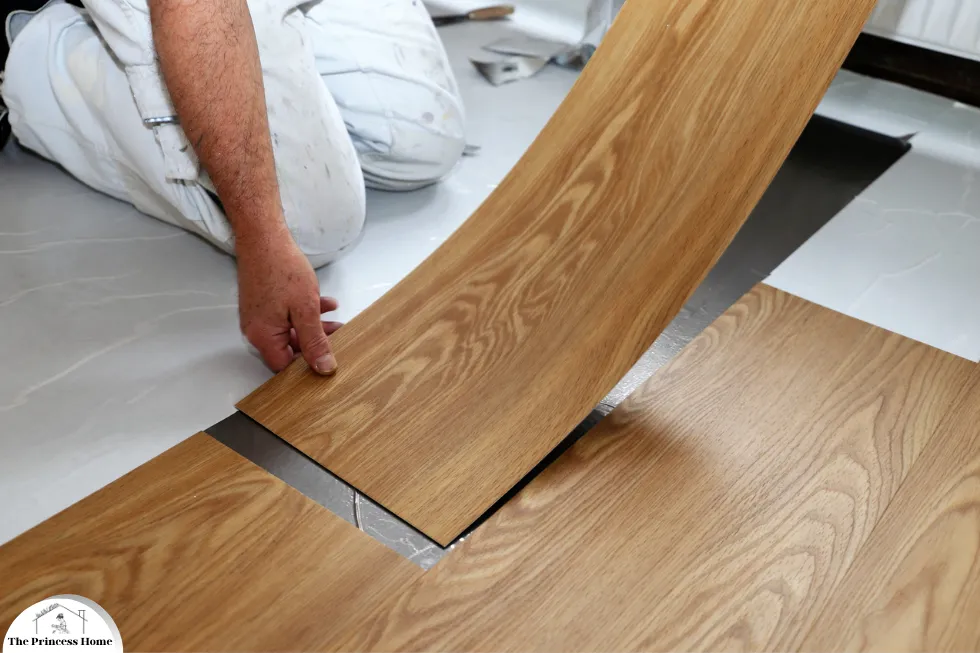
Pros:
- Affordable and versatile
- Waterproof and stain-resistant
- Durable and low-maintenance
- Soft and comfortable underfoot
- Excellent sound insulation
Cons:
- May emit VOCs
- Prone to fading in direct sunlight
- Not as eco-friendly as other options
- Limited design options compared to natural materials

4*.Tile Flooring:
Tile flooring, available in ceramic, porcelain, and natural stone options, offers unmatched durability and versatility. Ceramic and porcelain tiles are moisture-resistant, making them suitable for bathrooms and kitchens, while natural stone tiles add a touch of luxury to any space. Tile flooring is easy to clean, hypoallergenic, and available in a wide range of colors, patterns, and textures. However, it can be cold underfoot and may require professional installation.
Tile floor is a popular choice for many homeowners due to its durability, versatility, and timeless appeal. It’s made from various materials such as ceramic, porcelain, natural stone, and even glass.
Here are some key points about tile floor:
1.Durability:
Tile flooring is known for its exceptional durability and ability to withstand heavy foot traffic, moisture, and wear and tear. Ceramic and porcelain tiles, in particular, are highly resistant to scratches, stains, and fading, making them suitable for both indoor and outdoor use.
2.Versatility:
Tile flooring comes in a wide range of styles, colors, shapes, and sizes, allowing homeowners to achieve virtually any design aesthetic they desire. Whether you prefer the classic look of subway tile, the rustic charm of natural stone, or the sleek modernity of large-format porcelain tiles, there’s a tile option to suit every taste and decor style.
3.Variety of Materials:
Tile flooring is available in various materials, each with its own unique characteristics and advantages. Ceramic tiles are affordable, easy to clean, and come in an array of colors and patterns. Porcelain tiles are denser and more durable, making them ideal for high-traffic areas and outdoor use. Natural stone tiles, such as marble, granite, travertine, and slate, add a touch of luxury and elegance to any space.
4.Water Resistance:
One of the significant benefits of tile flooring, particularly ceramic and porcelain tiles, is their water resistance. This makes them an excellent choice for bathrooms, kitchens, laundry rooms, and other areas prone to moisture exposure. Properly sealed natural stone tiles can also offer excellent water resistance.
5.Low Maintenance:
Tile flooring is relatively low maintenance compared to some other flooring options. Regular sweeping, vacuuming, and mopping with a mild detergent are typically all that’s needed to keep tile floors looking clean and beautiful. Grout lines may require occasional scrubbing and resealing to prevent staining and discoloration.
6.Cooling Effect:
Tile flooring has a natural cooling effect, making it an ideal choice for warmer climates or rooms where temperature control is a concern. Its ability to conduct and dissipate heat can help keep indoor spaces feeling comfortable and refreshing.
7.Longevity:
When properly installed and maintained, tile flooring can last for decades, making it a durable and cost-effective investment for homeowners. While the initial installation cost may be higher than some other flooring options, the long-term durability and timeless appeal of tile can make it a worthwhile investment.
8.Installation:
Tile flooring installation typically requires professional expertise, especially for natural stone tiles or intricate patterns. Proper substrate preparation, tile layout, and grout application are essential for achieving a high-quality, long-lasting tile floor.
Overall, tile flooring offers a winning combination of durability, versatility, and aesthetic appeal, making it a popular choice for homeowners seeking beautiful and practical solutions for their homes.

Pros:
- Extremely durable and long-lasting
- Moisture-resistant and easy to clean
- Wide range of design options
- Hypoallergenic and hygienic
- Adds value to the property
Cons:
- Cold and hard underfoot
- Professional installation may be required
- Grout lines can be difficult to clean
- Natural stone tiles require periodic sealing
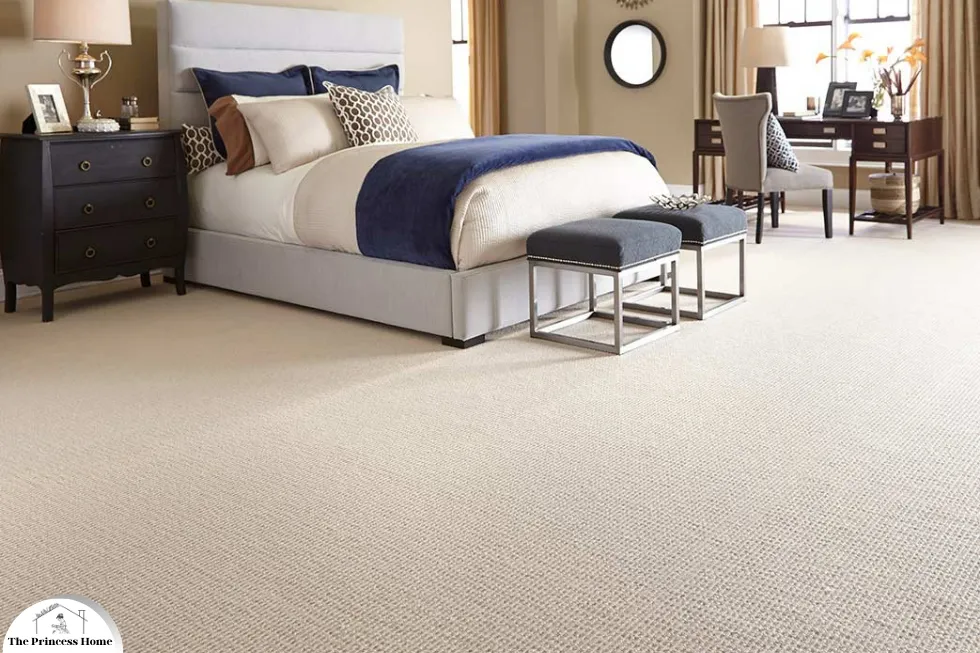
5*.Carpet Flooring:
Carpet flooring offers unmatched comfort and warmth, making it a popular choice for bedrooms, living rooms, and family rooms. It provides excellent insulation, reducing energy costs and minimizing noise transmission. Carpet comes in a variety of materials, including nylon, polyester, and wool, each offering unique benefits. However, carpet can trap allergens and stains, requiring regular cleaning and maintenance.
Carpet flooring offers a soft, cozy, and comfortable option for many homeowners, providing warmth and insulation while also enhancing the aesthetics of a room.
Here are some key points about carpet flooring:
1.Comfort:
Carpet flooring is known for its softness and warmth underfoot, making it a comfortable option for bedrooms, living rooms, and other areas where comfort is a priority. Its cushioning effect can also help reduce fatigue and provide insulation, making rooms feel cozier and more inviting.
2.Variety of Styles:
Carpet flooring comes in a wide range of styles, colors, patterns, and textures, allowing homeowners to customize their spaces to suit their personal tastes and decor preferences. From plush, luxurious carpets to durable, low-pile options, there’s a carpet style to fit every design aesthetic.
3.Sound Absorption:
Carpet flooring has excellent sound-absorbing properties, helping to reduce noise transmission and minimize echoes within a room. This makes it an ideal choice for bedrooms, home offices, and other areas where noise reduction is desired.
4.Safety:
Carpet flooring can provide a safer surface for households with young children or elderly individuals, as it offers more traction and slip resistance compared to hard flooring surfaces like tile or hardwood. Additionally, carpet can help cushion falls and reduce the risk of injury.
5.Insulation:
Carpet flooring acts as a natural insulator, helping to retain heat in the winter and keep rooms cooler in the summer. This can result in energy savings by reducing the need for heating and cooling, particularly in colder climates.
6.Easy Maintenance:
While carpet flooring requires regular vacuuming and occasional deep cleaning to maintain its appearance and hygiene, many modern carpet fibers are stain-resistant and easy to clean. Spills and stains can often be quickly and easily removed with the appropriate cleaning products and techniques.
7.Affordability:
Carpet flooring is generally more affordable than many other flooring options, such as hardwood, tile, or natural stone. This makes it an attractive choice for homeowners on a budget or those looking to update multiple rooms without overspending.
8.Allergen Management:
While carpet flooring can potentially harbor allergens such as dust mites, pet dander, and pollen, regular vacuuming and professional cleaning can help minimize allergen buildup. Additionally, some carpet fibers are treated with anti-allergen treatments to help reduce allergy symptoms.
9.Installation:
Carpet flooring installation typically requires professional expertise to ensure proper fitting, stretching, and seaming. Professional installers can also help determine the best carpet padding for optimal comfort and longevity.
Overall, carpet flooring offers a comfortable, affordable, and versatile option for homeowners seeking to enhance the comfort, style, and functionality of their living spaces. With proper maintenance and care, carpet can provide years of enjoyment and beauty in the home.
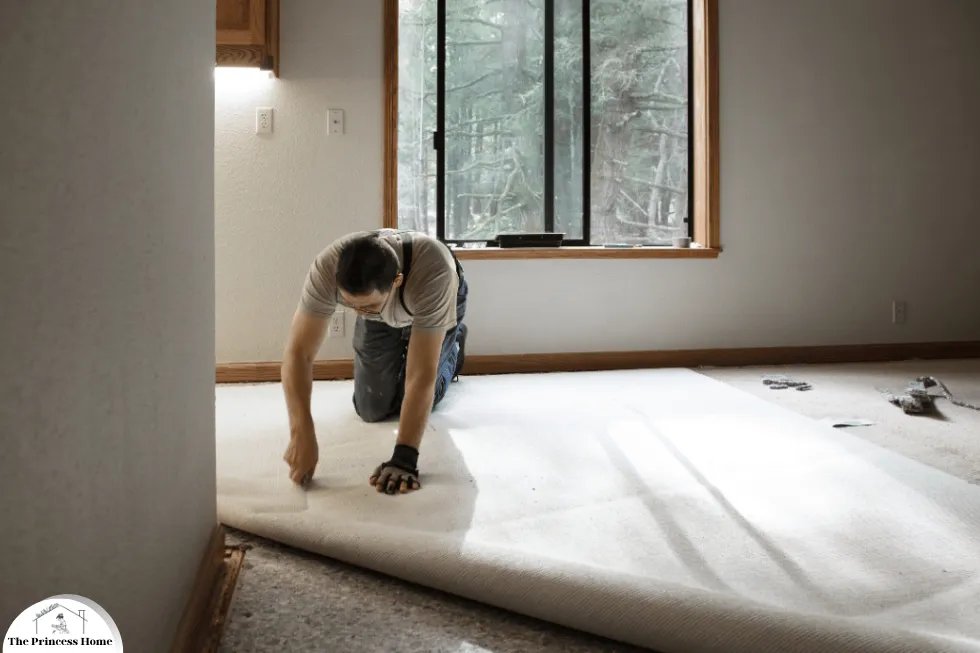
Pros:
- Soft and comfortable underfoot
- Provides insulation and noise reduction
- Wide range of colors and styles
- Budget-friendly option
- Offers warmth and coziness
Cons:
- Prone to stains and odors
- Traps allergens and dust mites
- Requires regular vacuuming and professional cleaning
- Not suitable for high-moisture areas like bathrooms and kitchens
Conclusion:
Choosing the right flooring for your home involves considering various factors, including durability, maintenance requirements, budget, and aesthetic preferences.
Here are some frequently asked questions about hardwood flooring along with their answers:
Q1.Is hardwood flooring suitable for every room in the house?
Hardwood flooring is versatile and can be installed in most rooms, including living rooms, bedrooms, dining rooms, and even kitchens. However, it’s not recommended for areas prone to moisture, such as bathrooms and basements, as exposure to water can cause damage to the wood.
Q2.What is the difference between solid hardwood and engineered hardwood?
Solid hardwood is made from a single piece of wood and is generally thicker than engineered hardwood. Engineered hardwood consists of multiple layers of wood veneer glued together, with a top layer of hardwood. While both types can offer the beauty of hardwood, engineered hardwood is often more resistant to moisture and can be installed below grade.
Q3.How do I maintain hardwood flooring?
Regular maintenance is essential to keep hardwood floors looking their best. Sweep or vacuum regularly to remove dirt and debris, and clean up spills promptly to prevent water damage. Use a hardwood floor cleaner recommended by the manufacturer, and avoid harsh chemicals or abrasive cleaners that can damage the finish.
Q4.Can hardwood flooring be installed over radiant heating?
Yes, hardwood flooring can be installed over radiant heating systems, but it’s important to choose the right type of wood and installation method. Engineered hardwood is often recommended for radiant heat as it is more stable and less prone to warping than solid hardwood. Consult with a professional installer to ensure proper installation and compatibility with your heating system.
Q5.What should I do if my hardwood floors get scratched or damaged?
Minor scratches and dents can often be repaired by sanding down the affected area and refinishing the floor. For deeper scratches or gouges, you may need to replace the damaged boards. It’s always a good idea to keep extra flooring material on hand for repairs, especially if you have pets or young children who may cause more wear and tear.
Q6.Is hardwood flooring environmentally friendly?
Hardwood flooring can be environmentally friendly if sourced from sustainable forests and certified by organizations such as the Forest Stewardship Council (FSC). Additionally, choosing reclaimed or salvaged wood can reduce the environmental impact of hardwood flooring. Engineered hardwood made from fast-growing tree species can also be a more sustainable option.



